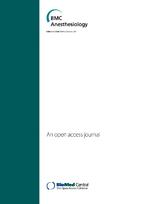
ARTHROPLASTY
Continuous adductor canal block with LIA provides better pain relief than LIA alone in UKA patients
BMC Anesthesiol. 2019; 19: 114.46 patients scheduled for a unicondylar knee arthroplasty were randomized to receive local infiltration analgesia in addition to an adductor canal blockade (ACB) with 0.2% ropivacaine or a sham ACB with normal saline. The primary outcome of interest was pain on a Numeric Rating Scale (NRS) during knee flexion, at 24 hours post-operation. Secondary outcomes of interest included NRS pain scores during rest and movement, the number of patients with NRS pain score > 3 at rest and during movement, opioid consumption, ambulation distance, quadriceps muscle strength, patient satisfaction and the incidence of complications. Follow up was performed in the first 48 hours post-operation. Results revealed significantly favourable NRS pain scores during knee flexion at 24 hours, and NRS pain scores at pain and during rest in the first 48 hours, in the ACB group compared to the control group. The proportion of patients with pain scores greater than 3 was significantly different between the two groups at 48 hours post-operation at rest, and both 24 and 48 hours during motion, in favour of the ACB group. The time to breakthrough pain (NRS > 3) and ambulated distance were significantly in favour of the ACB group. No significant differences were observed in morphine consumption and patient satisfaction between the two groups. No cases of complication were reported in either group.
Unlock the full ACE Report
You have access to {0} free articles per month.Click below to unlock and view this {1}
Unlock NowCritical appraisals of the latest, high-impact randomized controlled trials and systematic reviews in orthopaedics
Access to OrthoEvidence podcast content, including collaborations with the Journal of Bone and Joint Surgery, interviews with internationally recognized surgeons, and roundtable discussions on orthopaedic news and topics
Subscription to The Pulse, a twice-weekly evidence-based newsletter designed to help you make better clinical decisions
Exclusive access to original content articles, including in-house systematic reviews, and articles on health research methods and hot orthopaedic topics
Or upgrade today and gain access to all OrthoEvidence content for just $1.99 per week.
Already have an account? Log in


Subscribe to "The Pulse"
Evidence-Based Orthopaedics direct to your inbox.
{0} of {1} free articles
Become an OrthoEvidence Premium Member. Expand your perspective with high-quality evidence.
Upgrade Now












































































